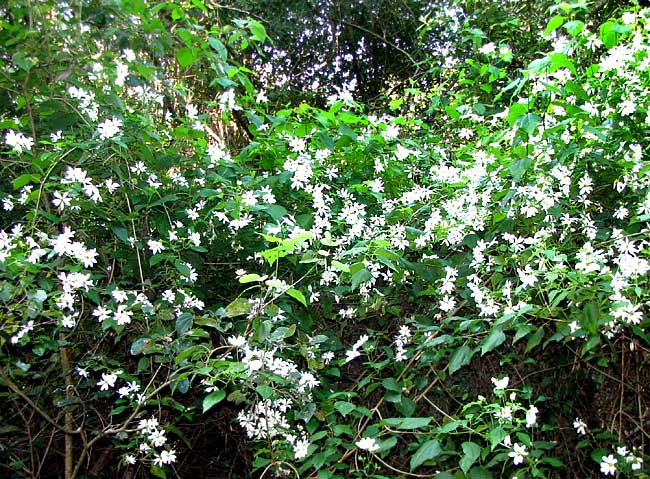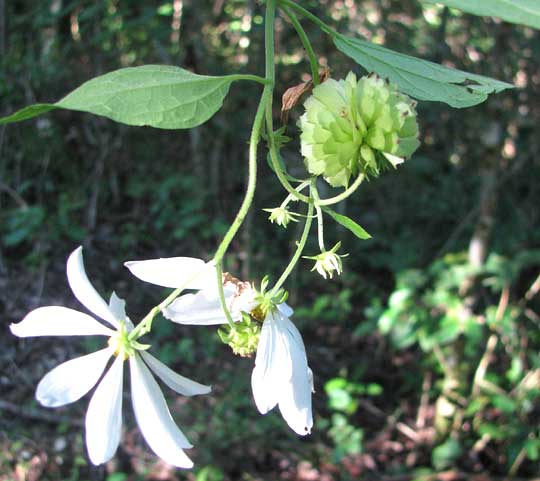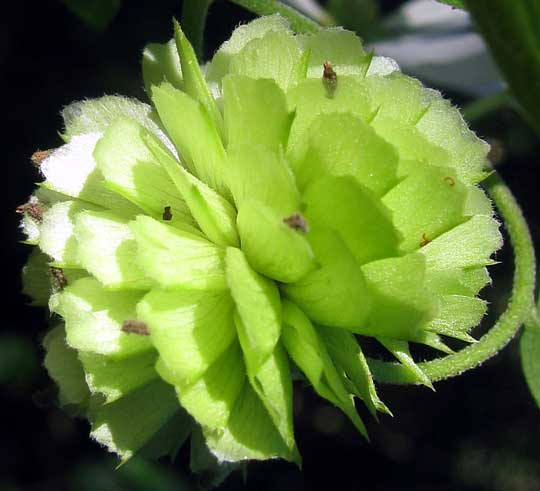Excerpts from Jim Conrad's
Naturalist Newsletter

from the December 6, 2009 Newsletter issued from Hacienda Chichen Resort beside Chichén Itzá Ruins, central Yucatán, MÉXICO; limestone bedrock, elevation ~39m (~128ft), ~N20.676°, ~W88.569°
TREE DAISIES
In the woods where a trail or treefall admits more sunlight than usual, these days sometimes you run into a woody shrub that's almost viny the way it clambers over other plants, and it's so brightly adorned with white, silver-dollar-sized flowers that you just have to stand and look at how the plant glows, as shown above.
When you draw close to see what it is you find interesting stuff. The flowers look exactly like daisy flowers -- clearly members of the Sunflower or Composite Family -- but daisies aren't woody vines, plus the fruiting heads are very unusual, as shown below:

This daisy-like half-shrub/half-vine is sometimes called the Tree Daisy, sometimes the Yucatan Daisy. It's MONTANOA ATRIPLICIFOLIA. A close-up of one of those remarkable fruiting heads is shown below:

If you understand composite-flower anatomy -- reviewed at www.backyardnature.net/fl_comps.htm -- you'll like to know that those flatish, green, wafer- like things are much enlarged, specialized "receptacle bracts." Receptacle bracts are present in many but not all composite flowers. Usually they're like pale, papery, little fingernail clippings separating growing achene-fruits from one another. In Montanoa, however, they enlarge into scoop-like structures with the sides flat against one another, holding the ovary and later the achene-fruit inside. Notice that each bract bears a single tooth on one side. That's actually the center tooth of the bract, with its two sides folded together below it. When you pull off a bract the achene comes with it, so I assume that later the bract will behave like a wing during fruit dispersal by wind. Montanoa achenes bear no pappuses.
Tree Daisy is native from southern Mexico through much of Central America. It's such a pretty and unusual plant that it deserves to be cultivated much more than it already is.